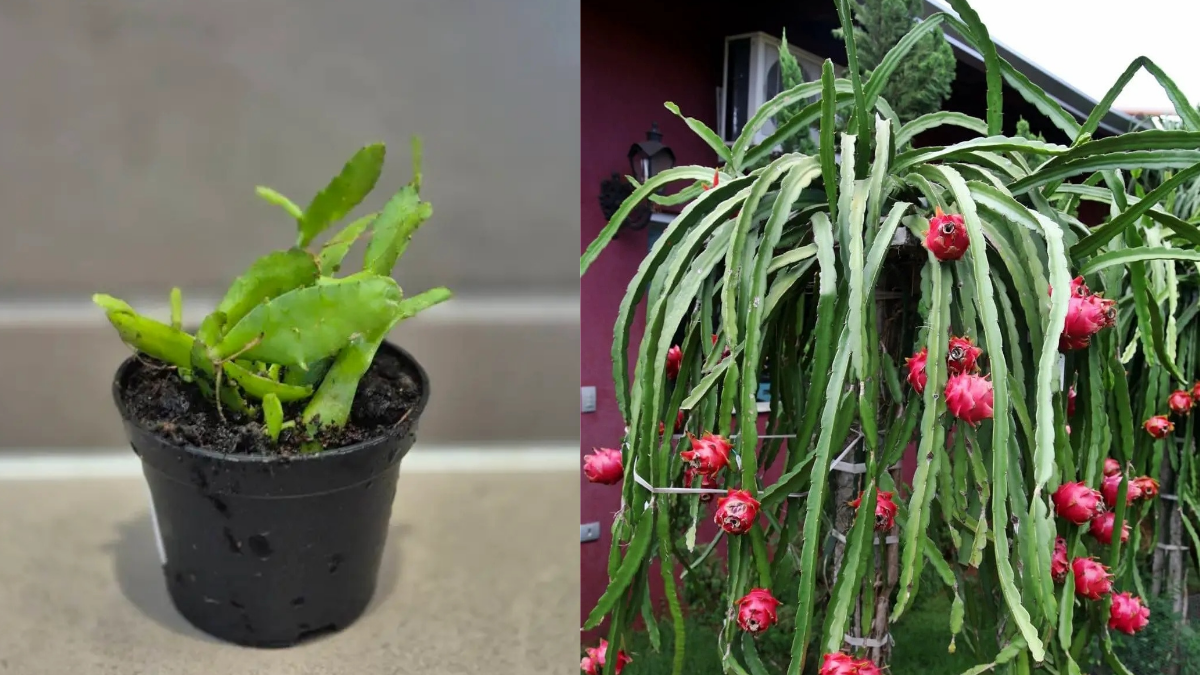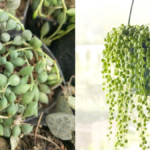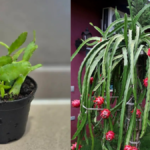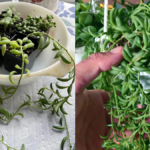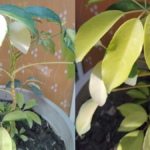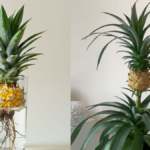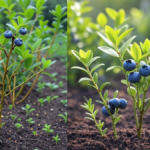How to Care for Dragon Fruit – Dragon fruit plant care is simple and rewarding if you give this tropical cactus the right environment. The dragon fruit plant needs proper watering, well-drained soil, and full sunlight to grow strong and healthy. For better results, it also requires a strong support system to climb, regular fertilizer for growth and fruiting, and timely pruning to manage extra stems. With the right care, the dragon fruit plant not only adds beauty to your garden but also rewards you with sweet, exotic fruits that are both healthy and delicious
I have been growing dragon fruit in my home garden for a few years, and I can say from experience that this plant is both beautiful and rewarding. When I first planted it, I was unsure if it would grow in our Indian weather, but with some simple care—like watering properly, giving support, and adding compost—it not only survived but gave me fresh dragon fruits.
About Dragon Fruit Plant
Dragon fruit, also called Pitaya, belongs to the cactus family. It is originally from Central America but is now grown successfully in India. The plant has long fleshy stems and needs support to climb.
| Type of Dragon Fruit | Flesh Color | Taste |
|---|---|---|
| Hylocereus undatus | White | Sweet, mild flavor |
| Hylocereus costaricensis | Red | Sweet, juicy |
| Hylocereus megalanthus | Yellow | Very sweet |
Quick Tips for How to Care for Dragon Fruit
- Sunlight: 6–8 hours daily direct sunlight.
- Soil: Sandy or loamy soil with organic compost.
- Watering: Keep soil slightly moist, avoid overwatering.
- Support: Grow on pole, trellis, or wall.
- Temperature: 20°C to 30°C, protect from frost.
- Fertilizer: Apply compost or NPK during growth.
- Pruning: Remove extra stems for better fruiting.
Watering for Dragon Fruit Plant
In my experience, watering is the most important part. Dragon fruit plant is a cactus, but unlike desert cactus, it loves a little moisture.
- Water only when the top 1–2 inches of soil feels dry.
- In summer and monsoon, water more often.
- In winter, reduce watering because growth slows down.
- Always ensure drainage holes in pots to prevent root rot.
I made the mistake of overwatering once, and my plant turned yellow. After I fixed the drainage, the plant recovered well.
Soil for Dragon Fruit Plant
Healthy soil means a healthy plant. For dragon fruit:
- Use well-drained sandy or loamy soil.
- Mix compost, cow dung manure, or kitchen waste compost for fertility.
- Avoid heavy clay soil, it holds water and damages roots.
For pots, my mixture is:
- 50% garden soil
- 30% sand
- 20% compost
This works perfectly and keeps the roots healthy.
Sunlight Requirement for Dragon Fruit Plant
From my experience, dragon fruit plant loves sunlight. Without enough light, it won’t flower or fruit.
- Place it where it gets at least 6–8 hours of direct sunlight daily.
- In very hot weather (above 38°C), give light shade in the afternoon.
- Indoor plants should be kept near a balcony or window.
Temperature and Humidity for Dragon Fruit Plant
Dragon fruit loves a tropical climate.
- Best temperature: 20°C–30°C.
- Protect from frost; in cold regions, grow in pots and shift indoors in winter.
- Slight humidity is good, but too much rain can cause fungal problems.
In my garden, Surat’s warm climate suits this plant perfectly, but during heavy rains, I keep an eye on drainage.
Fertilizer for Dragon Fruit Plant
For better flowering and fruiting, dragon fruit plant needs regular feeding.
- Add organic compost or cow dung manure every month.
- During flowering, use NPK (10:10:10 or 14:14:14) fertilizer.
- Add bone meal or banana peel fertilizer for natural potassium.
- Avoid too much nitrogen, it makes stems grow but reduces fruits.
I mostly use homemade compost, and my plant fruits well every year.
Support for Dragon Fruit Plant
Since it is a climbing cactus, dragon fruit plant always needs support.
- Use a cement pole, bamboo stick, or wooden post around 5–6 feet tall.
- Tie stems gently with cloth or rope.
- A circular trellis on top of the pole works best for spreading.
Without support, my first plant started crawling on the ground and didn’t fruit well. Once I gave it a pole, the growth improved quickly.
Pruning the Dragon Fruit Plant
Pruning helps control growth and increases fruiting.
- Remove weak or extra stems.
- Keep 3–4 strong stems around the pole.
- Prune after harvesting season.
I prune twice a year, and it helps my plant stay healthy and manageable.
Propagation of Dragon Fruit Plant
You can grow dragon fruit from seeds or cuttings.
1. From Seeds
- Collect seeds from a ripe fruit.
- Wash, dry, and sow in sandy soil.
- Keep moist, they germinate in 2–3 weeks.
- But fruiting takes 5–6 years.
2. From Cuttings (Best)
- Take 8–12 inch healthy stem cutting.
- Dry for 1–2 days before planting.
- Plant in sandy soil, water lightly.
- Roots develop in 2–3 weeks.
- Fruiting starts in 1–2 years.
I always use cuttings, because they are faster and more reliable.
Common Problems in Dragon Fruit Plant
| Problem | Cause | Solution |
|---|---|---|
| Root rot | Overwatering | Improve drainage, water less |
| Yellow stems | Lack of nutrients or excess sun | Add compost, give partial shade |
| No flowers | Less sunlight or excess nitrogen | Give full sun, balance fertilizer |
| Fungal spots | Too much rain/humidity | Spray neem oil or fungicide |
My Experience with Dragon Fruit Plant
When I planted my first dragon fruit cutting, I was unsure if it would grow in my soil. I gave it compost, a cement pole for support, and watered carefully. Within one year, it climbed beautifully. In the second year, I saw my first flowers, which bloom only at night—it was magical! By the third year, I was enjoying sweet, homegrown dragon fruits.
From this journey, I learned that dragon fruit plant care needs patience. Once it starts fruiting, it rewards you with plenty every year.
Conclusion
Dragon fruit plant care is not difficult if you follow the basics—give it sunlight, proper watering, good soil, fertilizer, and strong support. With little patience and regular pruning, this plant will brighten your garden and provide exotic, sweet fruits. Growing dragon fruit at home is not just about fruit; it’s also about the joy of watching a unique cactus flourish.
